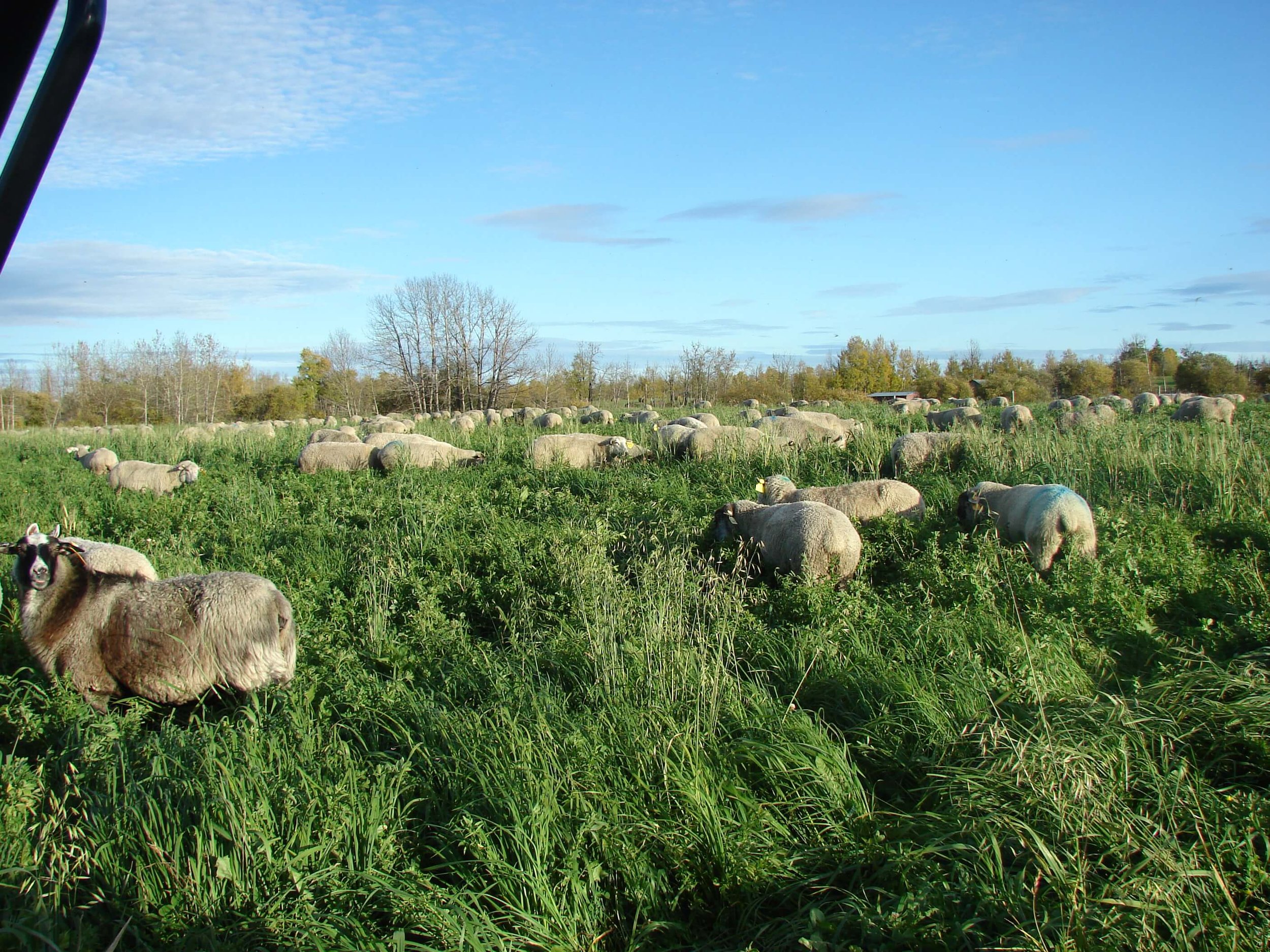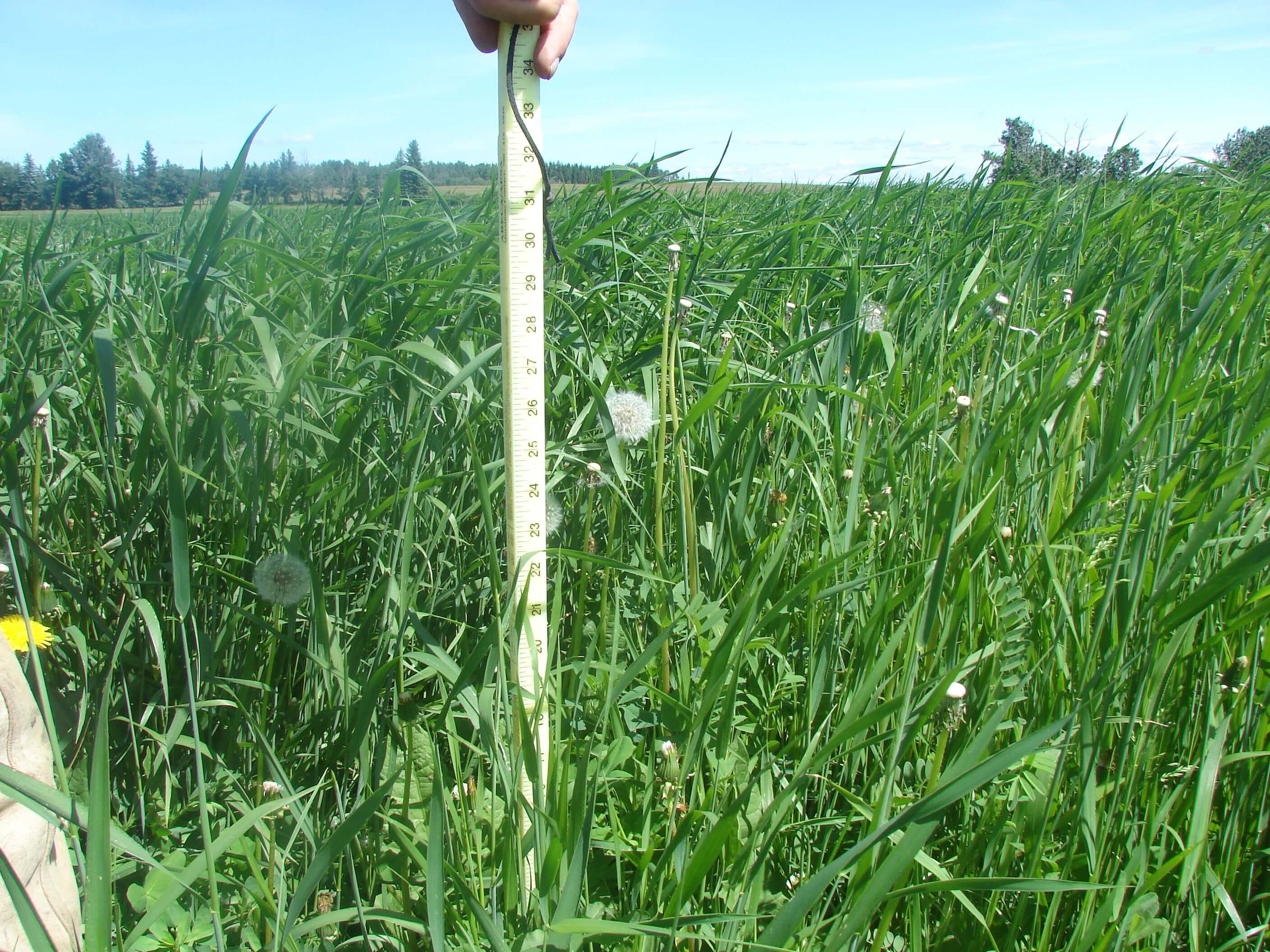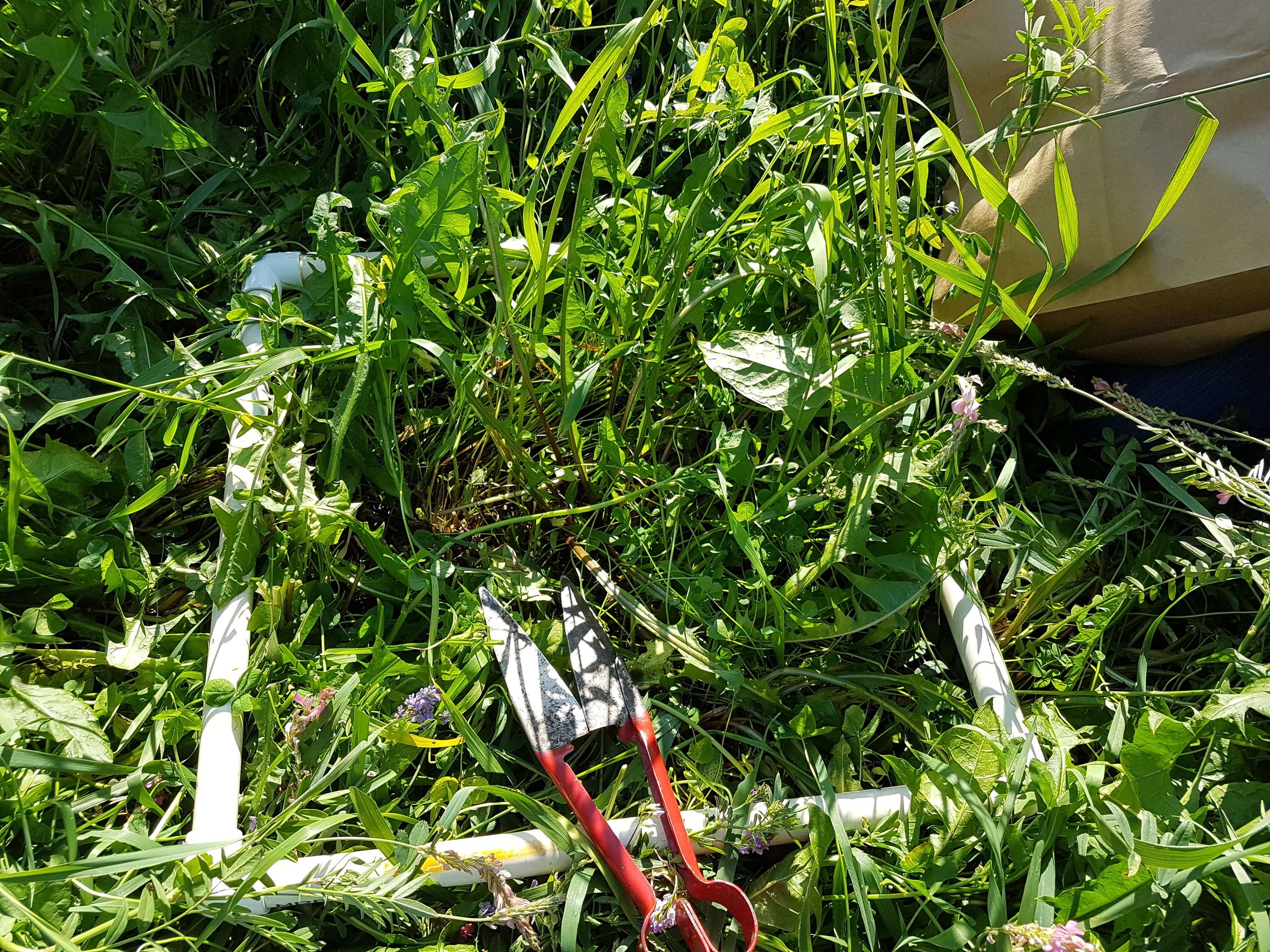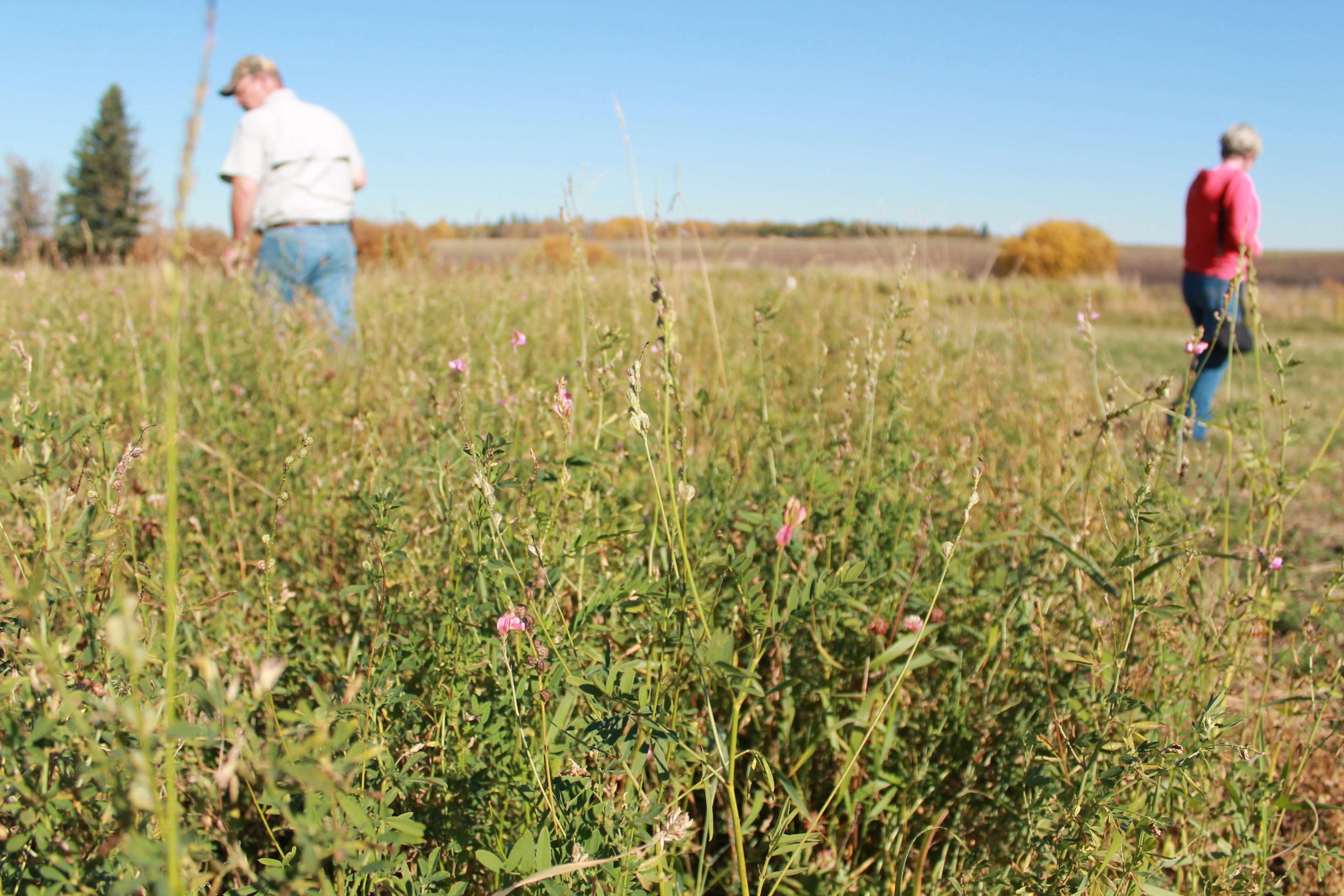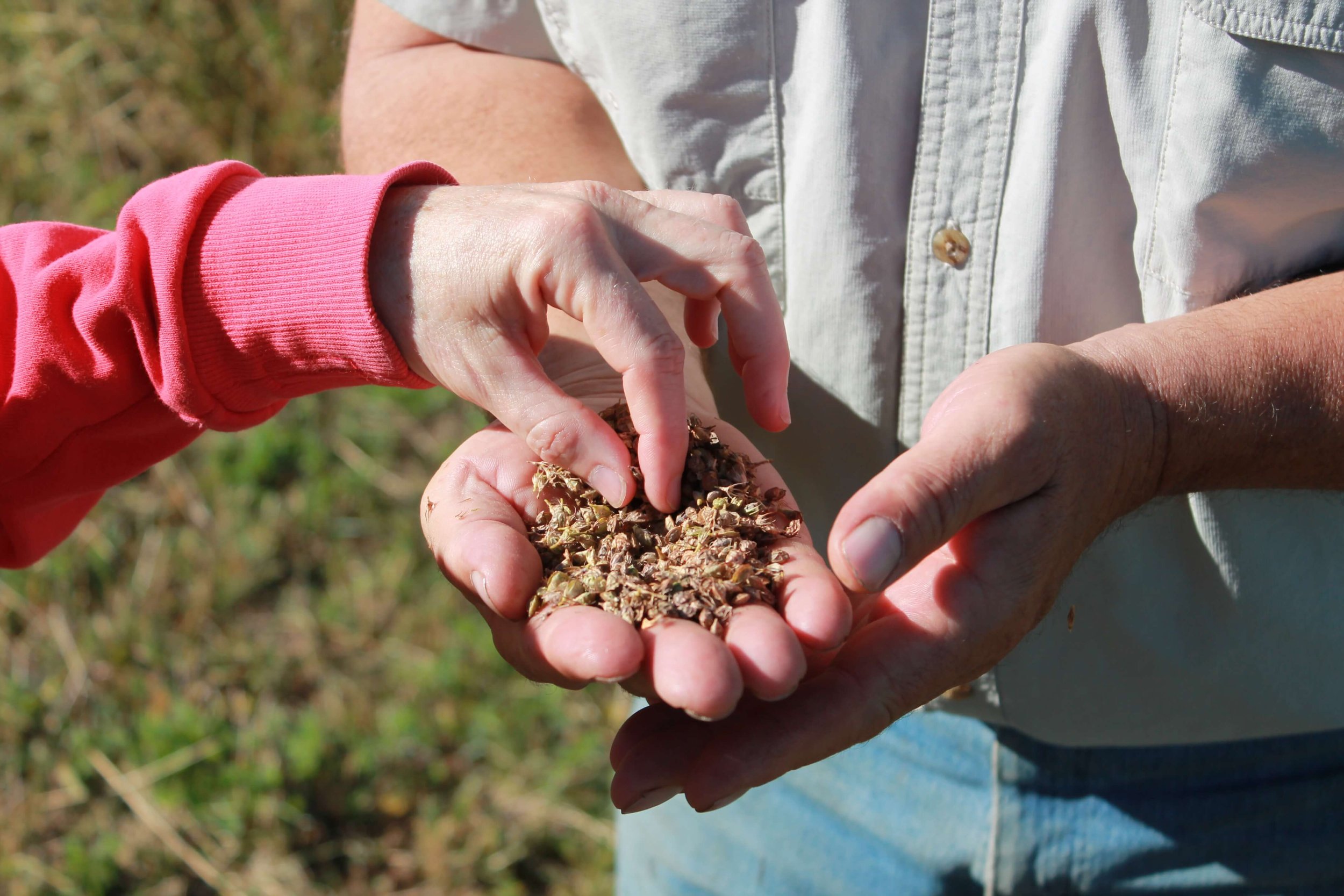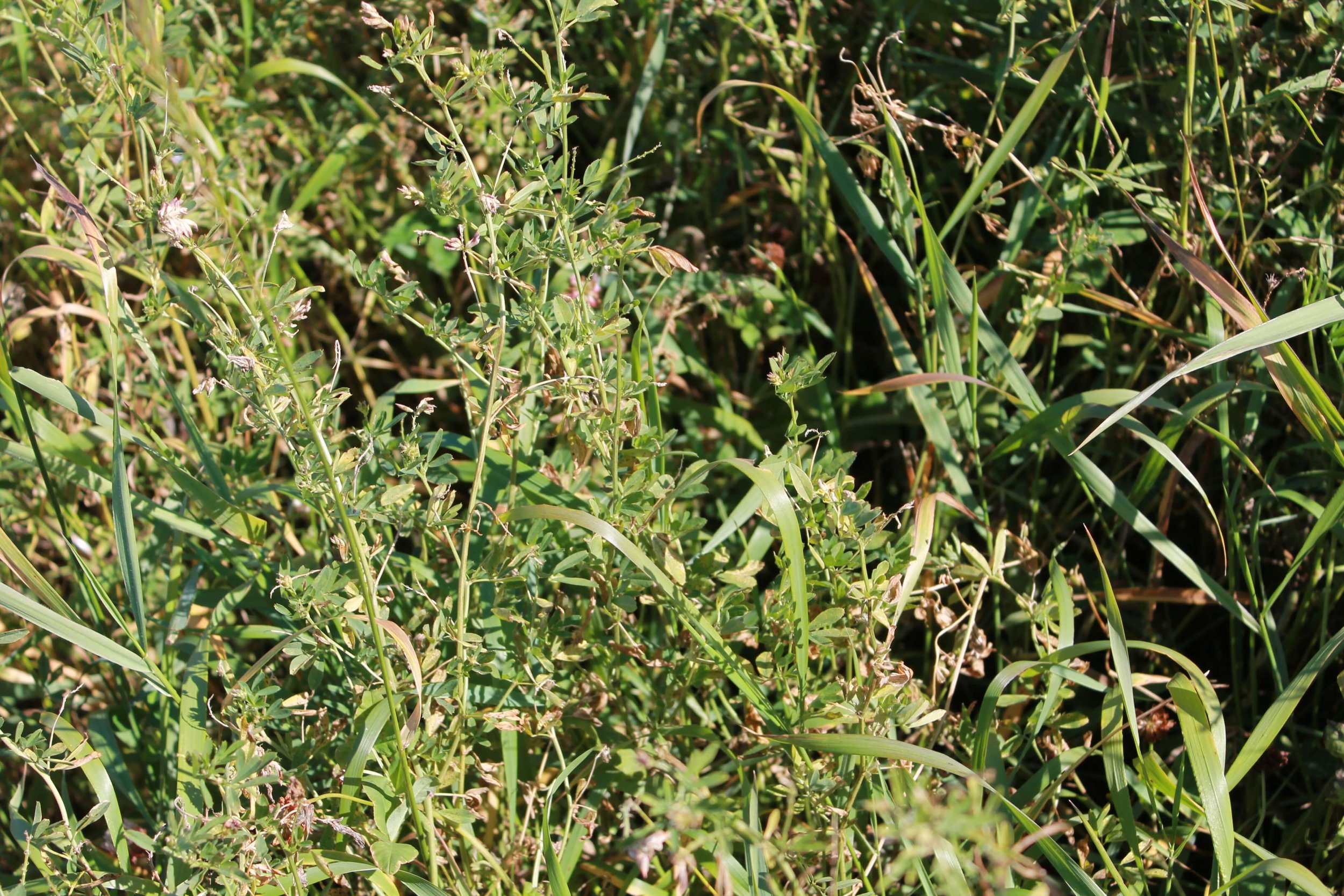High Legume Pasture Project (2017)
High Legume Pasture Project (2016-2017)
Overview.
New sainfoin varieties have shown promise for persistence under grazing in alfalfa-sainfoin mixtures, with comparable yields to alfalfa/grass mixes and are bloat mitigating. The threat of bloat in grazing livestock has stymied efforts by the livestock industry to use higher producing forage crops like alfalfa which could reduce the acres required to support livestock production and provide competitive gain opportunities for feeder cattle. The new emerging sainfoin cultivars will offer the livestock industry the opportunity to take advantage of the productivity, flexibility and profitability of legume based pastures. Sainfoin contains tannins that bind with the soluble proteins and inhibit the activity of rumen microbes; thus slowing the rate of digestion of the forages. A rapid rate of forage digestion has been determined to be a major cause of bloat.
By managing the pasture to ensure the sainfoin remains, animals will consume the tannins from the sainfoin and therefore reduce the chances of a bloat incident. The grass also present in the pasture gives another non-bloat grazing forage that when consumed will reduce the amount of alfalfa consumed, and therefore also reduce potential for animal bloat. The new sainfoin variety, AC Mountainview, that has been developed at the Lethbridge Research Centre is proving to be competitive in forage stands and has higher regrowth than previous varieties, allowing it to regrow at the same rate as alfalfa. Livestock producers could now use AC Mountainview as a natural bloat control and graze higher legume pastures confidently.
In cooperation with eleven forage and applied research associations, thirteen producers across Alberta, in consultation with high legume grazing mentors with financial and economic analysis, Alberta Agriculture and Forestry staff, coordinated a two year field trial to demonstrate the potential of sainfoin in a high-legume pasture mix on a field scale level. WCFA partnered with Rudy and Darlene Stein from Tiger Lily, located in the County of Barrhead for this project. The Stein’s had a 10 acre pasture previously cultivated for two years. The goal of this project was to provide producers with the opportunity to experience establishing a high legume pasture (60+ % legumes) and with grazing that pasture in the second year.
Objectives.
The primary goal of the project is to mitigate bloat while grazing high legume pastures. To determine establishment and longevity of high legume pasture stands. To determine high legume pasture stands performance under grazing pressure.
Participating Organizations.
Agriculture Research and Extension Council of Alberta
Alberta Agriculture and Forestry
Battle River Research Group, Forestburg, AB
Chinook Applied Research Association, Oyen, AB
Farming Smarter, Lethbridge, AB
Foothills Forage and Grazing Association, High River, AB
Gateway Research Organization, Westlock, AB
Grey Wooded Forage Association, Rocky Mountain House
Lethbridge Research and Development Centre
Agriculture & Agri-Food Canada
Mackenzie Applied Research Association, Fort Vermilion, AB
North Peace Applied Research Association, Manning AB
Peace Country Beef and Forage, Fairview, AB
Peace River Forage Association of British Columbia
West-Central Forage Association, Evansburg, AB
2016 Trial Summary.
The trial was seeded to a cultivated, harrowed and packed field on May 16, 2016 using a Brillon Seeder to a depth of ½ inch. 60% of the mixture was legumes (Sainfoin 70% and Alfalfa 30%) and the remaining 40% was grasses (Orchard Grass 33 %, Meadow Brome 33% and Tall Fescue33%).
Despite the lack of precipitation at the time of the seeding in May (28mm), the subsoil moisture was moderate and the soil temperate was 22˚C. Aggressive weed growth was observed due to the moisture conditions in early June (41mm) and July (141mm). For weed control, sheep were allowed to graze from June 23 to 27. A single cut and rake occurred on July 26 and the baling and wrapping was done on July 28. The weeds identified at that time were: Buckwheat, Pigweed, Wild oats, Hemp nettle, Quackgrass and greater population of Wild mustard plants.
On August 8, to determine germination and stand establishment, plant counts were conducted on an area of ¼ meter squared at 10 locations throughout the field. 5 locations had moderate grazing pressure and the other 5 had low grazing pressure. One additional grazing took place in the fall after frost.
2017 Trial Summary.
May: Over all the snow cover all winter was good. At the start of the growing season there was an extreme amount of volunteer clover.
June: Four pasture cages were placed on the field to determine the percentage of each variety by weight. On June 29, clippings were taken, fresh weight and dry weight were measured and the percentage of each species was calculated for each cage. Species composition percentage average in the field was calculated in July.
July: On July 10, the field was grazed with 500 head of sheep. Alfasure® was administered to the flock 24 hours prior to grazing (just one treatment).
August: On August 29, cutting, baling and wrapping was completed. Species composition percentage average in the field was calculated. Some observations on the filed prior to the cutting were:
More sainfoin plants present where grass was not seeded
Sainfoin plants just starting to set seed
On the lower parts of the field there were less sainfoin plants
Uneven distribution of the sainfoin plants, but zero cases of bloat reported
Suspected that grass and clover suppressed the sainfoin population
September: Late September clippings were collected. More sainfoin plants were observed on the north and south sides of the test field where there was less pressure from grass and weeds. There was a great amount of volunteer clover, likely due to the extreme moisture during the growing season.
October: All the areas with sainfoin plants present were left standing to allow them to set seed for the next growing season. The remainder of the field was cut and baled.
To view the full report please download the PDF below.

